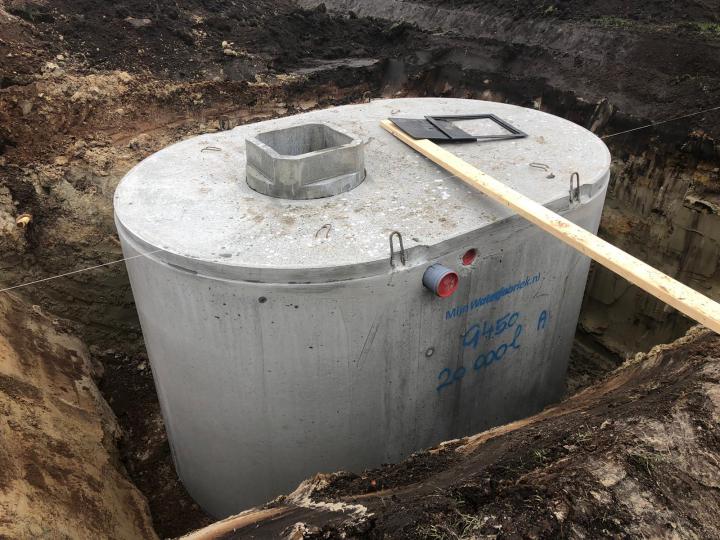FROM RAINWATER TO SAFE DRINKING WATER
SafeWater systemTM
With the SafeWater system™ you can make your own drinking water from rainwater. This intelligent system ensures 99,99% micro biologically safe water. The rainwater is successively purified by a micro filter, an active carbon filter, a membrane filter (UF) and a UVC unit. All in one step.

1. The RainWater system
2. Rainwater supply
3. Crawl space
4. Rainwater tank
5. Rainwater filter
6. Pressure hose
7. Submersible pump
8. Quiet inflow
9. Expansion tank
10. Level measurement with replenishment unit
11. Replenishment line to the tank
12. Expansion tank for pressure stroke pump
Operation of the SafeWater system™
Rainwater is drained via the rainwater pipes (2) and collected in one or more underground tanks (4). A filter (5) is built into it that prevents coarse dirt such as sand and leaves from entering the tank. Under the filter, a quiet inflow (8) is placed at bottom level so that the incoming rainwater cannot cause pollution to swirl up. A submersible pump (7) is hung in the tank which draws rainwater in at least 15 cm from bottom level. Via a pressure hose (6) the rainwater is pressed into the building to the SafeWater system™ (1). Note: Alternatively, a pump system with a self-priming pump, a three-way valve and a break tank can be used for the replenishment of mains water. This is then installed in the building. This is then in the building. Let our staff advise you on this. The SafeWater system™ cleans the rainwater immediately before use. The pump starts as soon as there is water demand in the building. For this purpose the pump must be equipped with a pressure control. The water level in the tank is recorded by a level measurement (10). If the water level is too low, 10% mains water will be added to the tank via the replenishment unit (10) and replenishment pipe (11). Right next to the SafeWater system™ hangs a 24 litre expansion tank (9) which takes care of the backwashing of the membrane. In the outgoing pressure pipe to the taps hangs a second expansion tank (12) which absorbs the pressure stroke of the pump.
Key benefits
Projects

Ingenious rainwater system for landscaping Sluishuis
Rainwater for landscaping on balconies and roofs

Self-sufficient water system at Frederiksoord home
The Homes of the Future
Rainwater at Eco village Boekel
Ecodorp Boekel is being built up in three residential circles

